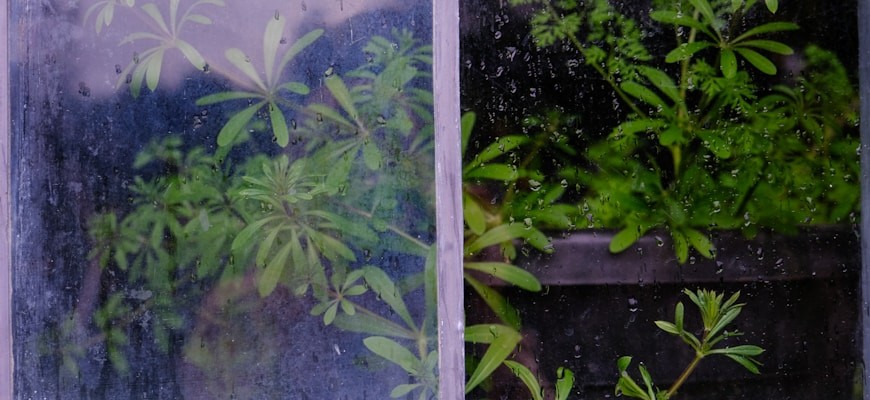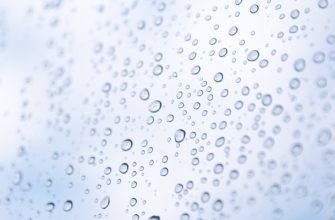Nature’s Air Purifiers: The Role of Plants
Plants serve as natural air purifiers, playing a crucial role in improving indoor air quality. Their ability to absorb carbon dioxide while releasing oxygen is well-known, but many species also possess the capability to filter out toxins and pollutants from the air. This natural process can significantly enhance the environment of homes and offices.
- Spider Plant: Known for its resilience, this plant effectively removes formaldehyde and xylene, making it an excellent choice for improving air quality.
- Peace Lily: This beautiful flowering plant not only adds aesthetic value but also filters out ammonia, benzene, and formaldehyde from the air.
- Aloe Vera: Beyond its medicinal properties, aloe vera helps eliminate pollutants and is particularly effective at removing formaldehyde.
- Boston Fern: Renowned for its ability to remove harmful toxins, the Boston fern thrives in humid environments, making it ideal for bathrooms and kitchens.
- Areca Palm: This plant is one of the most effective humidifiers and removes toxins like xylene and toluene, contributing to a healthier indoor atmosphere.
The effectiveness of these natural air purifiers lies in their biological processes. Through photosynthesis, plants convert carbon dioxide into oxygen, while their root systems and leaves absorb harmful chemicals. In addition to beautifying spaces, incorporating these plants into indoor environments can lead to a healthier lifestyle.
Utilizing plants as air purifiers not only enhances air quality but also contributes to emotional well-being. Studies have shown that being surrounded by greenery can reduce stress and improve concentration levels. Therefore, fostering a connection with nature through indoor plants is a beneficial strategy for creating a more pleasant and healthier living or working space.
Technological Innovations in Air Cleaning
Technological innovations in air cleaning have emerged as essential tools in the quest for improved indoor air quality. Advanced systems leverage cutting-edge technology to purify the air more efficiently than traditional methods. These modern air cleaning solutions utilize a variety of mechanisms, including filtration, ionization, and UV light purification, to effectively reduce airborne pollutants.
- HEPA Filters: High-Efficiency Particulate Air (HEPA) filters are capable of trapping particles as small as 0.3 microns, making them highly effective in removing dust, pollen, and pet dander from the air.
- Activated Carbon: This technology adsorbs odors and volatile organic compounds (VOCs), enhancing the overall air quality and creating a more pleasant indoor environment.
- UV Light Purification: Ultraviolet light systems destroy bacteria and viruses, ensuring that the air is not only clean but also safe for occupants.
- Ionic Air Purifiers: These devices release negatively charged ions that attach to airborne particles, causing them to clump together and fall out of the air, making it cleaner to breathe.
The integration of smart technology into air cleaning devices further enhances their effectiveness. Smart air purifiers can monitor air quality in real-time, adjusting their operation based on detected pollutants. This adaptive technology not only improves efficiency but also reduces energy consumption, making it an environmentally friendly choice.
As the demand for cleaner air grows, technological advancements continue to evolve. These innovations not only provide immediate benefits in air purification but also contribute to long-term health improvements. By comparing these high-tech solutions with natural methods like using plants, it becomes clear that technology plays a vital role in the future of air cleaning.
Comparing Efficacy: Plants vs. Air Purification Devices
When considering air purification, it’s essential to compare the efficacy of natural methods, such as plants, with technological solutions like air purification devices. Both options have unique benefits and limitations that can impact indoor air quality.
Plants have long been celebrated for their ability to improve air quality naturally. They absorb carbon dioxide and release oxygen through photosynthesis, while also removing harmful toxins from the air. Common indoor plants like peace lilies, spider plants, and snake plants are known for their air-purifying abilities. However, the efficiency of plants in purifying air is limited by factors such as light, water, and space.
In contrast, air purification devices utilize advanced technology to filter and eliminate pollutants from the air. These devices can effectively remove particulate matter, allergens, and volatile organic compounds (VOCs), providing immediate results. Moreover, many modern air purifiers are equipped with HEPA filters, which capture up to 99.97% of particles as small as 0.3 microns, ensuring a higher level of air cleanliness.
- Effectiveness: Air purifiers generally outperform plants in terms of rapid pollutant removal.
- Maintenance: Plants require regular care, including watering and pruning, whereas air purifiers need filter replacements and occasional cleaning.
- Cost: Initial investment in air purification devices can be higher than the cost of acquiring houseplants, but long-term operational costs may vary.
- Visual Appeal: Indoor plants enhance aesthetic appeal and can contribute to a more pleasant living environment.
Ultimately, the decision between plants and air purification devices hinges on individual preferences and specific air quality needs. While plants offer a natural approach to improving indoor air quality, air purification devices provide a more comprehensive and immediate solution. Combining both methods can yield the best results, creating a healthier living space while also enjoying the beauty of greenery.
The Science Behind Plant-Based Air Filtration
The effectiveness of plant-based air filtration has been a subject of scientific interest for decades. Research indicates that certain plants possess the remarkable ability to purify indoor air by absorbing pollutants and releasing oxygen. This natural process is primarily attributed to the plants’ foliage, root systems, and associated microorganisms in the soil.
- Photosynthesis: During photosynthesis, plants absorb carbon dioxide and release oxygen, which improves air quality.
- Volatile Organic Compounds (VOCs) Absorption: Many indoor pollutants, such as benzene and formaldehyde, are classified as VOCs. Studies have shown that specific plants can absorb these harmful substances through their leaves and roots.
- Microbial Activity: The root zones of plants harbor beneficial microorganisms that further break down harmful chemicals, contributing to enhanced air purification.
Numerous studies, including those conducted by NASA, have identified particular species that excel in air purification. For instance, the peace lily, spider plant, and snake plant are renowned for their efficiency in removing toxins from the air. The presence of these plants in indoor environments can significantly reduce the concentration of pollutants, providing a healthier atmosphere.
In contrast to technological air filtration systems, which often rely on electricity and maintenance, plant-based air purification offers a sustainable and aesthetically pleasing alternative. By incorporating plants into living and working spaces, individuals can benefit from natural air filtration without the need for complex mechanisms.
Understanding the science behind plant-based air filtration emphasizes the importance of integrating greenery into indoor spaces. Not only do plants enhance air quality, but they also promote mental well-being and improve overall quality of life. As awareness of air quality issues grows, exploring natural solutions like plant-based filtration becomes increasingly relevant.
Eco-Friendly Solutions: How Greenery Enhances Indoor Air Quality
In recent years, the importance of indoor air quality has gained significant attention, leading to a growing interest in eco-friendly solutions. One of the most effective and natural methods to enhance air quality is through the incorporation of greenery within indoor spaces. Plants not only beautify an environment but also play a vital role in purifying the air.
Indoor plants are known to absorb carbon dioxide and release oxygen, creating a healthier atmosphere. Additionally, specific species of plants can filter out harmful pollutants, including formaldehyde, benzene, and trichloroethylene, which are commonly found in household items and furnishings.
- Spider Plant: Known for its ability to remove pollutants and is easy to care for.
- Peace Lily: Effective in absorbing toxins and also adds a touch of elegance to any space.
- Snake Plant: This hardy plant converts carbon dioxide into oxygen at night, improving air quality even while you sleep.
- Aloe Vera: Not only beneficial for skin care but also helps in purifying the air.
- Pothos: A great choice for beginners, it thrives in low light and effectively cleans the air.
Incorporating a variety of plants can significantly improve the indoor environment, making it fresher and more inviting. The natural process of photosynthesis allows these plants to absorb harmful substances, thus enhancing overall air quality. Furthermore, the presence of greenery has been linked to reduced stress levels and increased productivity, contributing to better well-being.
While technology offers various air purification solutions, the integration of plants presents a sustainable and aesthetically pleasing alternative. Emphasizing eco-friendly practices, using plants for air purification aligns with the growing movement towards sustainable living. By choosing to incorporate greenery, individuals can create a healthier indoor space that not only improves air quality but also enriches their living environment.
Smart Technologies: The Future of Air Purification
Smart technologies have revolutionized air purification, offering innovative solutions that complement traditional methods such as using plants. These advanced systems utilize cutting-edge mechanisms to enhance indoor air quality efficiently. With rising concerns about air pollution and respiratory health, the demand for effective air purification technologies is growing rapidly.
- Smart Sensors: Equipped with real-time monitoring capabilities, these sensors detect pollutants and adjust purification levels automatically, ensuring optimal air quality at all times.
- HEPA Filters: High-Efficiency Particulate Air (HEPA) filters capture 99.97% of airborne particles, making them a crucial component of modern air purification systems.
- UV-C Technology: Ultraviolet light is used to eliminate bacteria and viruses, providing a safe and chemical-free method of air disinfection.
- Ionizers: These devices release negatively charged ions that attach to airborne particles, causing them to clump together and fall out of the air, thereby improving air quality.
- Smart Integration: Many air purifiers can connect to smart home systems, allowing users to control and monitor air quality remotely through mobile apps.
The integration of these smart technologies into air purification systems reflects a shift towards more efficient and user-friendly solutions. Unlike traditional methods, which may rely solely on natural processes, modern devices provide a proactive approach to managing indoor air quality.
As air quality continues to be a pressing concern, the future of air purification lies in combining the benefits of technology with the natural advantages of plants. This synergy can lead to more effective and sustainable air purification strategies, ensuring cleaner air for everyone.








